
North America
10:58, 07-Mar-2019
The road not taken: Bloomberg says he won’t run in 2020
Updated
11:19, 07-Mar-2019
By Yu Jing
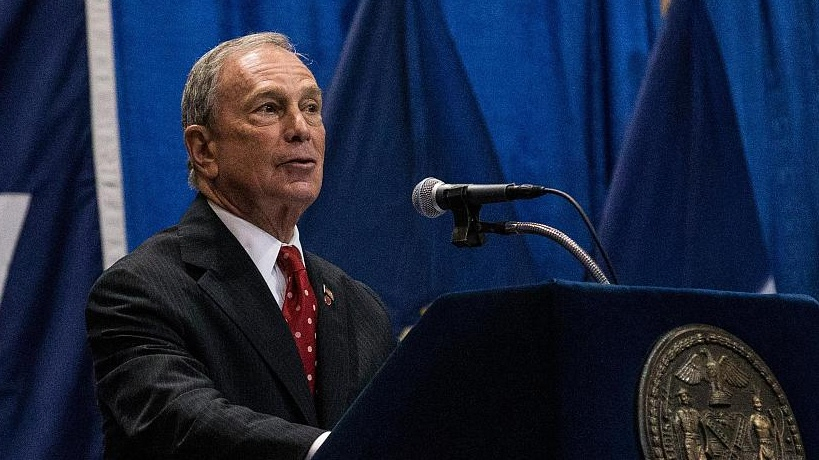
On March 5, billionaire, former mayor of New York City, the Republican-turned-Democrat Michael Bloomberg announced that he is not running for president in 2020, joining former Democratic nominee Hilary Clinton and former Attorney General Eric Holder in ruling out a presidential run.
The 76-year-old businessman, one of the richest in the world, has been an outspoken critic of Trump and previously considered running for president in 2016. During the last election cycle, he refrained from joining the race at the last minute, citing fear that a three-person race would increase the odds for a Trump presidency.
In an increasingly left-leaning Democratic base where opposing the influence of money in politics has become the primary issue, Bloomberg, the business-friendly richer-than-Trump billionaire, would be an odd contender for the Democratic nominee. As he suggests in the column announcing his plan, "I know what it takes to run a winning campaign... but I am clear-eyed about the difficulty of winning the Democratic nomination in such a crowded field."
A centrist among progressives
Ever since Bernie Sanders' thunderous rise in 2016, the Democratic base has shifted irreversibly to the left.
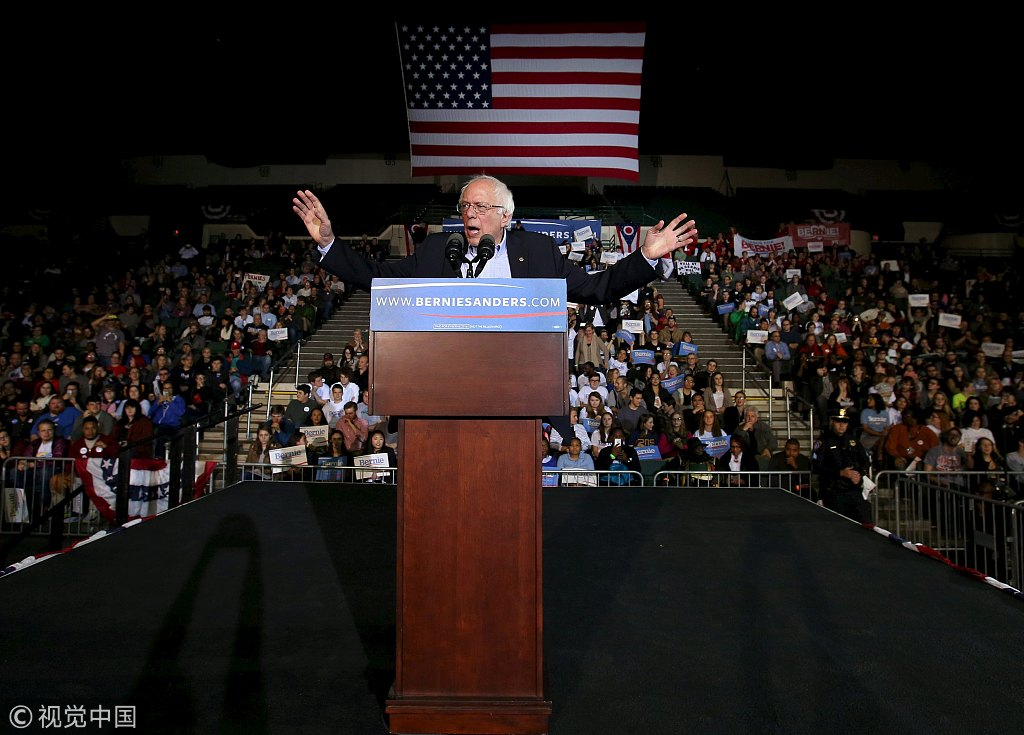
U.S. Democratic presidential candidate, U.S. Senator Bernie Sanders speaks during a campaign rally at Cleveland State University in Cleveland, Ohio, November 16, 2015. /File photo via VCG
U.S. Democratic presidential candidate, U.S. Senator Bernie Sanders speaks during a campaign rally at Cleveland State University in Cleveland, Ohio, November 16, 2015. /File photo via VCG
Almost all Democratic contenders who have a viable shot at winning – Bernie Sanders, Kamala Harris, Kirsten Gillibrand, Elizabeth Warren and the undecided Beto O' Rourke – are running unabashedly progressive campaigns.
Bloomberg, on the other hand, is a fiscal conservative, and a Me Too critic, though his firm stance on climate change and gun control have found resonance within the party.
But on the signature issues that other key Democratic contenders stand for, raising taxes on the ultra-rich, free college tuition and a Green New Deal, Bloomberg cannot be further from the Democratic base.
While Kamala Harris is a firmer supporter of Sanders' Medicare for All, Bloomberg dismissed the bill as too expensive, saying it would risk putting the U.S. in bankruptcy. He also lambasted Elizabeth Warren's proposal for taxing the ultra-wealthy as unconstitutional.
All six Democratic contenders are co-sponsors of the Green New Deal, a bill designed to slow climate change and transform industries into low-carbon ones. But Bloomberg never expressed support. On the contrary, in his latest Bloomberg column, he called it "stands no chance of passage in the Senate over the next two years."
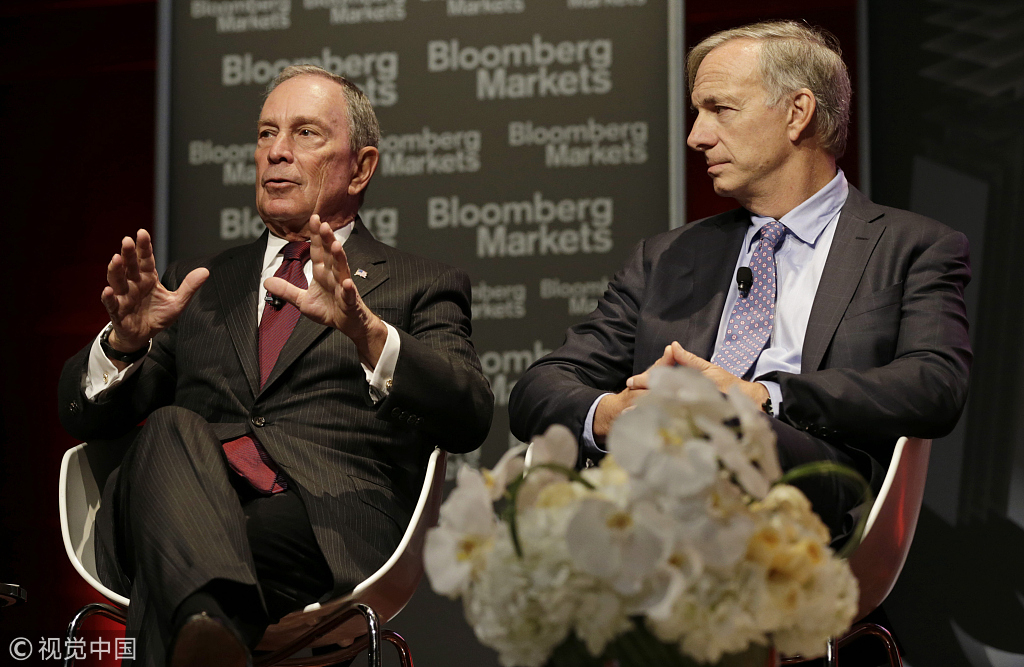
Bloomberg at a panel discussion of the Bloomberg Markets Most Influential Summit in New York, September 22, 2014. /File photo via VCG
Bloomberg at a panel discussion of the Bloomberg Markets Most Influential Summit in New York, September 22, 2014. /File photo via VCG
Bloomberg's record in defending stop-and-frisk, a law enforcement tactic often being accused for targeting black and Hispanics, his outspoken attitude against the Me Too Movement, including his defense of Charlie Rose when allegations against him for sexual assault began to surface, would make him an unlikely candidate for the Democratic base.
But Bloomberg's centrist view also means he might be able to rally greater political support from the center, especially given his strong governing record in his years as mayor of the New York City. But even this advantage seems to pale as the likelihood of former Vice President Biden's entry into the 2020 race increases. Polling data from Real Clearpolitics shows that the average favorable rate of Bloomberg is 3.3 whereas for Biden it is 27.5.
What the Democrats need in 2020
Bloomberg repeatedly raised the cardinal rule of American presidential campaigns as appealing to the center.
In his 2016 letter announcing his decision not to run for presidency, Bloomberg wrote, “Over the course of American history, both parties have tended to nominate presidential candidates who stay close to and build from the center. But that tradition may be breaking down.”
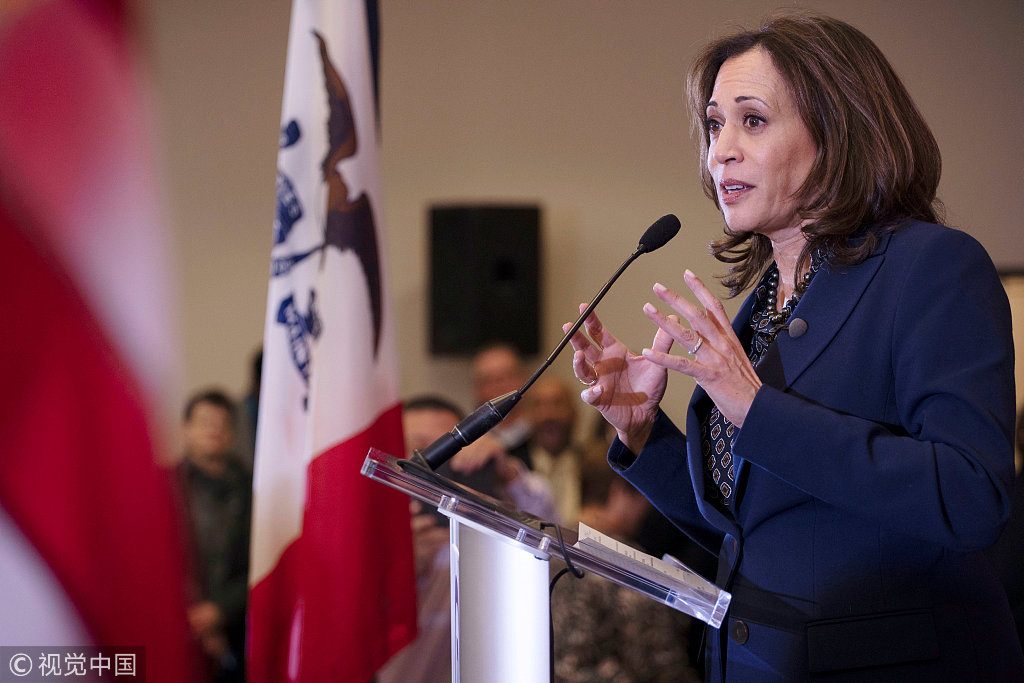
California Senator Kamala Harris speaks at a Polk County Democrats event in Des Moines, Iowa, U.S., October 22, 2018. /VCG Photo
California Senator Kamala Harris speaks at a Polk County Democrats event in Des Moines, Iowa, U.S., October 22, 2018. /VCG Photo
Bloomberg himself is an embodiment of political agility. He switched to the Republican party to run for mayor of New York City in 2001, registered as an independent in 2007, and re-registered as a Democrat in 2018.
His chameleon-like approach to politics stood in sharp contrast to many of the other Democratic contenders, for whom economic inequality has been a singular issue in the campaign.
Yet the 2016 experience shows that to win the 2020 race, capturing votes in the Rust Belt would be essential. The state of Wisconsin, Michigan and Pennsylvania enabled Trump to win in 2016 despite of having less popular vote. White work-classing residents at the industrial heartland, who had been left behind for long as the wheels of globalization rolled on, voted for Trump for his promise to bring back job opportunities and install trade protectionism.
In states which have seen manufacturing jobs disappear, a white billionaire with close ties to Wall Street would find it hard to have resonance with voters. Progressives, on the other hand, who carry a populist economic message, might be more likely to stand out. Remember in the 2016 primary election, Sanders carried the state of Michigan in a surprise win over Clinton, 50 percent to 48 percent.
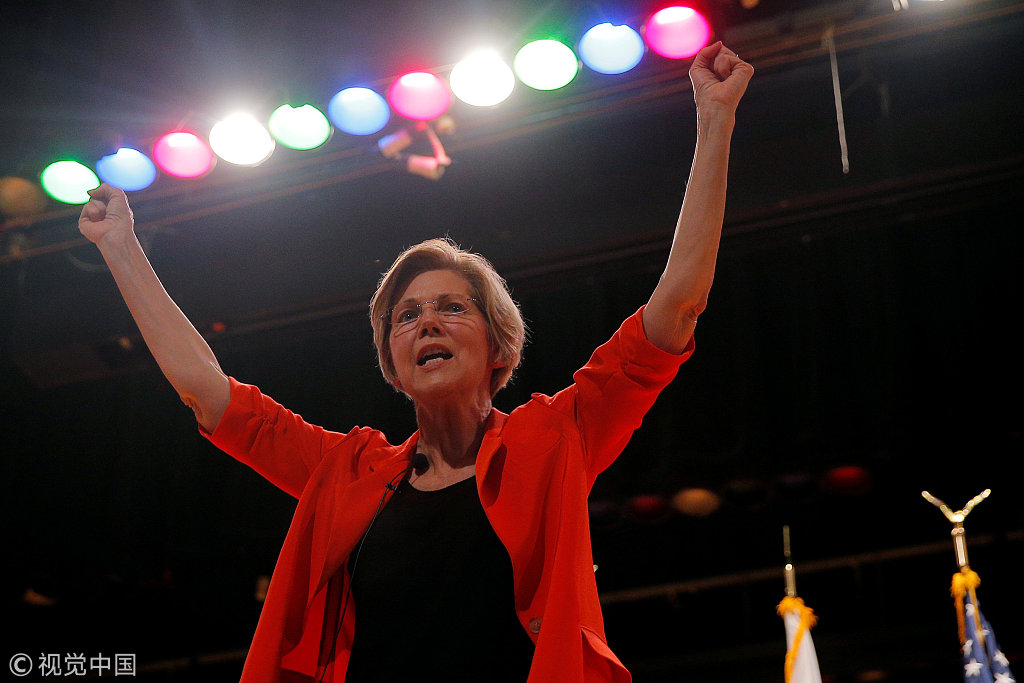
U.S. Senator Elizabeth Warren (D-MA) at a town hall meeting in Revere, Massachusetts, U.S., August 4, 2017. /File photo via VCG
U.S. Senator Elizabeth Warren (D-MA) at a town hall meeting in Revere, Massachusetts, U.S., August 4, 2017. /File photo via VCG
The other crucial region on the electoral map is the Sun Belt, e.g. Florida, North Carolina, Georgia etc. where the growth of a younger, nonwhite population is most evident. But their turnout has been low for years.
The Democratic party's young faces, ranging from 46-year-old O'Rourke to 54-year-old Kamala Harris, may have a galvanizing effects on young voters. O'Rourke's narrow loss to Ted Cruz in the Senate race in Texas reveals his potential. He raised a record-setting 69 million dollars during the campaign, the majority of which were from large and small individual contributions.
Though never having occupied the highest office in the White House, Bloomberg has played a leadership role on two issues crucial to the progressives: climate change and gun control. In the column announcing his intention not to run, Bloomberg again made the pledge to invest more on combating climate change –launching a campaign called Beyond Coal to get rid of coal-fired power plant over the next 11 years.
Progressives would thank him for doing that.
(Top image: Michael Bloomberg addresses the New York City Police Academy cadet graduation ceremony at the Barclays Center, July 2, 2013. /File photo via VCG)

SITEMAP
Copyright © 2018 CGTN. Beijing ICP prepared NO.16065310-3
Copyright © 2018 CGTN. Beijing ICP prepared NO.16065310-3